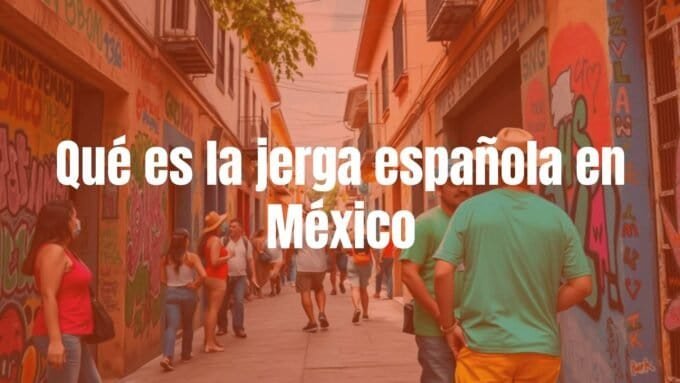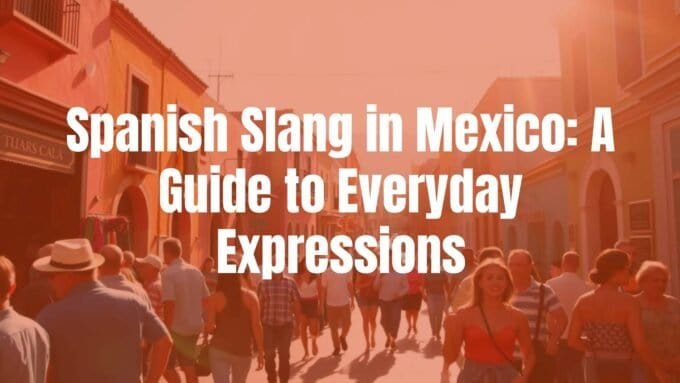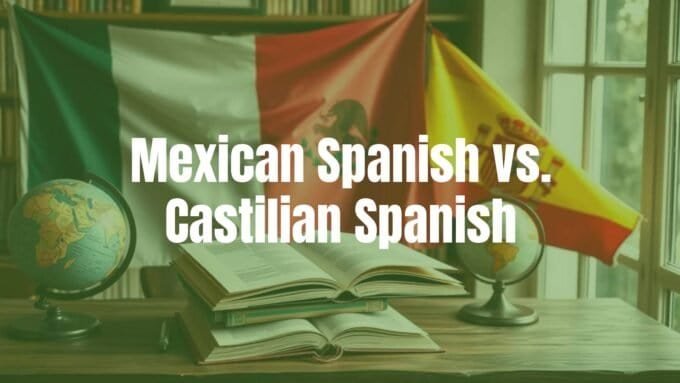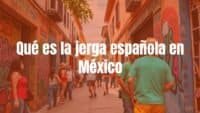Heading to Mexico brings lively culture, stunning scenery, and amazing food. The trip gets even better if you can chat with locals, move through busy markets, and join in daily life. While English is common in big tourist zones and larger cities, only about 10% of people in Mexico speak English, and even fewer are fluent. Learning a small set of Spanish phrases can turn your visit into a real experience, opening the door to friendly moments and helpful connections.

Why Learn Basic Spanish for Traveling in Mexico?
Even a short list of Spanish phrases can improve your trip a lot. It’s more than getting by; it shows respect, builds connection, and helps you understand the lively culture around you. Spanish shapes daily life in homes, schools, shops, and popular sights. Over a hundred million people in Mexico use Spanish, and about 25% of the world’s native Spanish speakers live there. Spanish is at the center of life in Mexico.
Note: Spanish is the main language used across the country, but it isn’t the only national language. The government recognizes Spanish and 68 Indigenous languages. This shows Mexico’s rich mix of cultures. Even with this variety, most people use Spanish at work, in public, and at home. So, whether you’re bargaining for a souvenir, ordering tacos, or asking for directions, a little Spanish helps a lot.
Benefits of Knowing Spanish as a Visitor
Knowing basic Spanish brings many pluses:
- Shows respect: “Hola” and “Gracias” often bring warmer replies than starting in English.
- Helps with daily needs: Order food the way you like it, ask for local tips, and follow bus routes more easily.
- Leads to real moments: Find hidden spots, have friendly talks, and learn about local life beyond tourist paths.
- Helps in tough moments: Ask for help or handle issues like delays, changes, or health needs.
- Useful on cruises: Handy at ports like Mazatlán and across the Mexican Riviera when talking with staff and fellow travelers.
Common Challenges for Non-Spanish Speakers
Travel without Spanish can bring hurdles. Outside the main tourist areas, English may not work, which can cause mix-ups and stress. Simple tasks like ordering food, asking for directions, or small talk can feel hard and may limit what you do.
Relying on apps can help, but they sometimes miss subtle meanings or pick the wrong word. That can cause confusion or awkward moments. Without clear talk, bargaining in markets, understanding customs, or handling an emergency gets harder. Learning even a few phrases turns roadblocks into chances to connect.
Key Spanish Greetings and Courtesies for Travelers
In Mexico, greetings matter. A quick hello in Spanish is a friendly start at shops, restaurants, and hotels. Politeness is valued, and your effort sets a positive tone.
Most-Used Greetings in Mexico
| Time | Spanish | Meaning/Note |
|---|---|---|
| Anytime | ¡Hola! | Hello (informal, friendly) |
| Morning (before noon) | ¡Buenos días! | Good morning |
| Noon to dusk | ¡Buenas tardes! | Good afternoon/evening |
| Night | ¡Buenas noches! | Good evening/Good night (also used to say goodbye at night) |
In casual chats, especially among younger people, you may hear “¡Qué onda!” (What’s up?). On the phone, people often answer with “¿Bueno?” (Hello?).
Polite Expressions and Responses
- Por favor / Porfa = Please
- Gracias = Thank you
- De nada = You’re welcome
- Disculpe = Excuse me/Sorry (to get attention; polite)
- Perdón = Excuse me/Sorry (general)
- Con permiso = Excuse me (let me pass)

Learning these basics keeps your talks friendly and smooth.
Expressing Thanks and Apologies
For thanks, say “¡Gracias!” You can add “Muy amable” (Very kind) for extra warmth. Reply with “De nada.”
For apologies, “Lo siento” is “I’m sorry” for more serious cases or sympathy. For small slips or to get by someone, use “Perdón” or “Disculpe.” Note that “Disculpe” (with the formal usted) is common with strangers in Mexico and is used often.
Useful Spanish Phrases for Everyday Interactions
Beyond greetings, a few simple lines help you connect and turn quick tasks into friendly exchanges.
Starting Conversations With Locals
Begin with “¡Hola!” or “¡Buenos días!” Then ask “¿Cómo estás?” (How are you?). With younger folks, “¿Qué onda?” (What’s up?) works well. Ask about the weather: “¿Qué tiempo hace?” or “¿Cómo es el clima?” Words like “soleado” (sunny), “lluvioso” (rainy), “nublado” (cloudy), and “caluroso” (hot) are handy.
Phrases for Introducing Yourself
Say “Me llamo…” (My name is…) and ask “¿Cómo te llamas?” (informal) or “¿Cómo se llama?” (formal). In Mexico, “tú” is fine in many cases, but “usted” is polite for older people or authority figures. After introductions, say “¡Mucho gusto!” (Nice to meet you!). A handshake is common; among friends, a hug or a cheek kiss can happen, especially with women.
Questions for Getting to Know Someone
“¿De dónde eres?” (Where are you from?) starts friendly chats. You might also ask “¿Qué hora es?” (What time is it?) or “¿Dónde trabajas?” (Where do you work?). You don’t need long stories; short questions lead to useful tips and local info.
Getting Around and Asking for Directions in Spanish
Moving around a new place can feel hard, but a few phrases make buses, taxis, and streets easier to handle. People in Mexico are warm and often happy to help with directions.
Asking for and Understanding Directions
Use “¿Dónde está…?” (Where is…?) plus your place: “¿Dónde está el baño?” (bathroom) or “¿Dónde está la playa?” (beach). For a route, say “¿Cómo llego a…?” (How do I get to…?). Need a map point? “¿Puede mostrarme en el mapa?” (Can you show me on the map?).
- Derecho = straight ahead
- A la izquierda = to the left
- A la derecha = to the right
- ¿Puede repetirlo por favor? = Can you repeat that, please?
- Más despacio, por favor = Slower, please
- Estoy perdido/a = I am lost
Phrases for Public Transport and Taxis
For buses: “¿A qué hora sale el camión?” (What time does the bus leave?). In Mexican Spanish, “camión” often means bus. In a shared taxi (colectivo), ask “¿Dónde me bajo?” (Where do I get off?) so you reach the right stop.
For taxis, it’s best to use registered services or airport shuttles. Say “Servicio de taxi” to request one. “¿Puede llevarme por favor?” (Can you take me, please?) gets you moving. Ask “¿Cuánto cuesta?” (How much is it?) and try to agree on the price before you go. For distance: “¿Qué tan lejos está…?” (How far is…?), for example, “¿Qué tan lejos está de la playa?”
Important Words for Landmarks and Streets
| Spanish | Meaning |
|---|---|
| El centro | Downtown / City center |
| La plaza / El Zócalo | Main square (El Zócalo in Mexico City) |
| La calle / La avenida | Street / Avenue |
| La estación | Station (bus or train) |
| El hotel / El restaurante | Hotel / Restaurant |
| El parque / El museo | Park / Museum |
You can also ask: “¿Hay una oficina de información turística cercana?” (Is there a tourist information office nearby?). Pointing helps if you don’t know the word.
Spanish for Hotels and Accommodations in Mexico
At hotels, a bit of Spanish makes check-in and your stay smoother. Staff in tourist areas may speak English, but Spanish effort is always appreciated.
Requesting Room Types and Amenities
On arrival, say “Tengo una reservación” or “Tengo una reserva a nombre de…” (I have a reservation under the name…). If you need a room, say “Necesito un cuarto para [número] personas.”
For beds: “una cama individual” (single), “una cama doble/matrimonial” (double). Need an extra bed? “Necesito una cama extra/adicional.” Ask for items like “una toalla extra” (extra towel) or “una manta” (blanket).
Common Questions at Reception
Ask about check-out: “¿A qué hora es la salida?” or “¿A qué hora es la hora de salida?” For more time: “¿Puedo hacer check-out tarde?” or “¿Ofrecen una salida tardía?”
Wi-Fi: “¿Cuál es la contraseña de Wifi?” Breakfast: “¿A qué hora sirven el desayuno?” These lines help you plan and get what you need with less stress.
Dining Out: Spanish Phrases for Mexican Restaurants
Mexican cuisine is listed by UNESCO as Intangible Cultural Heritage, a sign of its depth and history-from native crops and rituals to old cooking methods. A bit of Spanish helps you enjoy it more, beyond placing an order, and connects you with food traditions across regions.

Ordering Food and Drinks
At the door: “Una mesa para dos, por favor” (A table for two, please) or “porfa” for casual. To get the server’s attention, people say “Joven” (male) or “Señorita” (female). To order: “Me gustaría pedir…” (I would like to order…) or “Quiero…” (I want…). Example: “Quiero los tacos, por favor.”
Drinks you can ask for:
- Agua mineral = sparkling water
- Cerveza / Chela = beer (chela is casual)
- Vino = wine
- Refresco = soda
- Café = coffee (add “Leche” for milk)
Say “¡Salud!” (Cheers!) and “Buen provecho” before eating. “Para llevar” means to go; “Para comer aquí” means to eat in.
Asking About Menus and Dietary Needs
Unsure what to pick? Ask “¿Qué me sugiere?” or “¿Tiene una recomendación?” Make your needs clear: “Soy vegano/vegetariano/celíaco.” Or say “No como…” followed by “carne” (meat), “gluten,” “huevos” (eggs), “leche/lácteos” (milk/dairy), “mariscos” (seafood), “cacahuetes” (peanuts), “nueces de árbol/frutos secos” (tree nuts), or “trigo” (wheat).
Ask “¿Qué hay en este plato?” (What’s in this dish?) or “¿Lleva…?” (Does it have…?). You can say “con o sin queso” (with or without cheese) or &a un lado” (on the side). If needed: “Mi comida está fría/caliente.” Try local favorites like chilaquiles, mole, pozole, aguachile, barbacoa, chiles rellenos, and cochinita.
Understanding Bills and Tipping
Ask for the bill with “La cuenta, por favor” or “La cuenta, porfa.” You may hear “¿Cuánto va a ser?” (How much will it be?). For cards: “¿Puedo pagar con tarjeta?” or “¿Aceptan las tarjetas?” Some small places may be “Solo se acepta efectivo” (cash only).
Tips in Mexico are usually 10% to 15% in most eateries. Knowing the bill and tipping fairly shows good manners and respect.
Shopping, Markets, and Bargaining in Spanish
Markets in Mexico are full of color and local life. Prices can be fixed, but bargaining is common in many markets and small shops. Keep it friendly-it’s part of the experience.

Key Phrases for Buying and Negotiating
Start with price: “¿Cuánto cuesta?” or “¿Qué precio tiene?” Then you can try “¿Me lo deja más barato?” (Can you give me a better price?). Stay polite; it’s a friendly back-and-forth.
If it’s too high, say “Eso es demasiado caro.” If you’re browsing: “Solo estoy viendo, gracias.” If you pass: “No, gracias.” A short “gracias” in a firm tone also works when sellers insist.
Asking About Prices, Sizes, and Colors
For sizes: “¿Tiene esto en otra talla?” For colors: “¿Tiene esto en [color]?” Useful colors include rojo (red), azul (blue), verde (green), amarillo (yellow), blanco (white), and negro (black).
Numbers matter for prices and amounts. Practice 1-20, then up to 100. Ask for amounts: “Dos de esto, por favor” (Two of these, please). These short swaps help you buy what you want and make shopping more fun.
How to Ask for Help and Emergency Spanish for Travelers
We all hope for smooth trips, but it’s smart to be ready. A few emergency phrases in Spanish can make a big difference if something goes wrong.
Medical Emergencies and Seeking Assistance
Call for help with “¡Ayuda!” or “¡Auxilio!” Say “Estoy enfermo/a” (I am sick) or “Me duele…” (My … hurts), such as “la cabeza” (head), “el estómago” (stomach), or “el pecho” (chest). Feeling dizzy? “Me siento mareado/a.”
To get care: “Necesito un doctor/médico.” Looking for a pharmacy: “Busco una farmacia.” Ask “¿Dónde está el hospital más cercano?” (Where is the closest hospital?). If you have medicine: “Mi medicamento está…” (My medication is…) “en mi bolso” (in my bag), “en mi bolsillo” (in my pocket), or “en mi maleta” (in my suitcase). Keep local emergency numbers handy.
Essential Words for Police and Safety
For police, people may say “policía” or “patrulla.” Ask someone: “Llama a la patrulla” (Call the police). To show urgency: “Es una emergencia.”
General help: “Necesito ayuda” (I need help). Stay aware of your surroundings and use registered taxis when you can.
Important Contacts and Location Words
“Necesito llamar a la policía” (I need to call the police). “Estoy perdido/a” (I am lost). Useful place words: “el aeropuerto” (airport), “la estación” (station), “la farmacia” (pharmacy).
Carry a small list of key phrases and emergency numbers (local and home). Even pointing to a written line can help you be understood.
Mexican Spanish Slang and Local Expressions
Formal Spanish works well, but learning local slang adds flavor and fun. Mexican Spanish differs from Spain and other Latin American varieties. You’ll also hear playful double meanings in jokes, called “albur.”
Common Mexican Slang Travelers Hear
- ¡Qué onda! = What’s up?
- ¡Qué padre! = How cool!
- ¡Está muy chido! / ¡Chido! = Very cool / Cool
- ¡No manches! = No way! / Come on!
- Güey (wey) = dude/friend (casual; watch context)
- Fresa = snobby or posh person (literally “strawberry”)
- Chilango = person from Mexico City
- Crudo/Cruda = hungover (literally “raw”)
When to Use Informal Phrases
Use slang with friends, peers, and in casual spots. “¡Qué onda!” is fine with a street vendor or driver. In formal settings or with older people, stick to polite Spanish. “Joven” or “Señorita” is fine for servers; avoid “Güey” there.
Mexican humor can be full of double meanings. You don’t need to master it to enjoy it. Learn a few local words, watch the situation, and choose polite forms if unsure.
Tips for Improving Spanish While Traveling in Mexico
Your trip is a great chance to practice Spanish. A few phrases before you go help, but using them daily is what builds real skill.
Resources for On-the-Go Learning
Apps make learning light and handy. Google Translate helps, and the camera tool reads menus and signs in real time. Some apps are made for Mexican Spanish and focus on useful phrases and local words.
A small phrasebook is helpful in a pinch, especially for emergencies. Carry a tiny notebook to write new words you hear. Listen to local music, try reading headlines, and pay attention to everyday talk around you.
Overcoming Fear of Making Mistakes
Many people in Mexico are patient and happy to see you try Spanish. Don’t let fear of mistakes stop you. If you mix up “caballeros” (gentlemen) and “caballos” (horses), most people will smile and help.
Keep trying and ask for repeats: “¿Puede repetirlo por favor?” and “Más despacio, por favor.” Every attempt builds skill and makes your trip richer, helping you connect more with the people and culture of Mexico.














Leave a comment